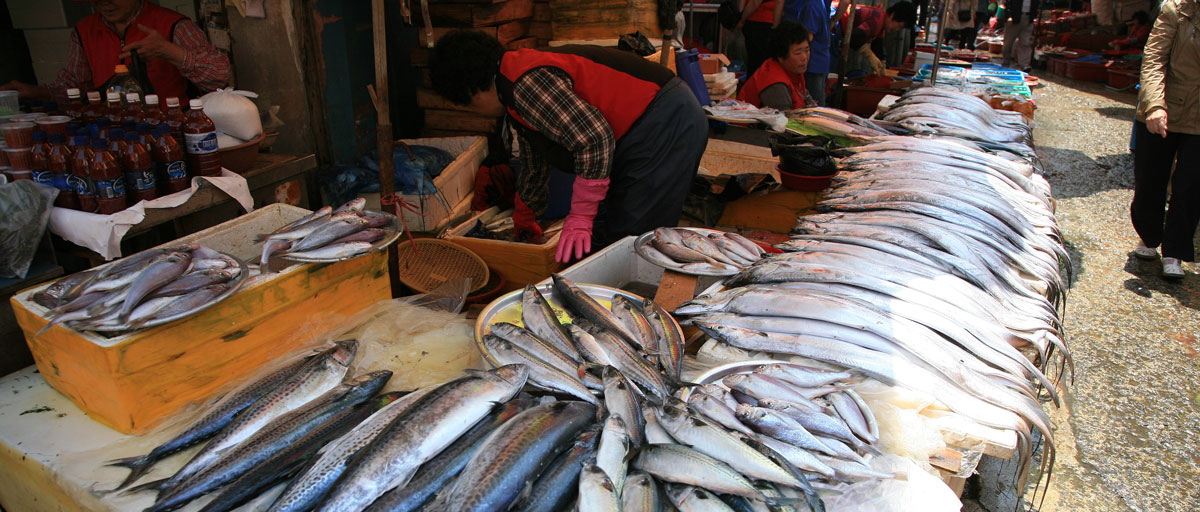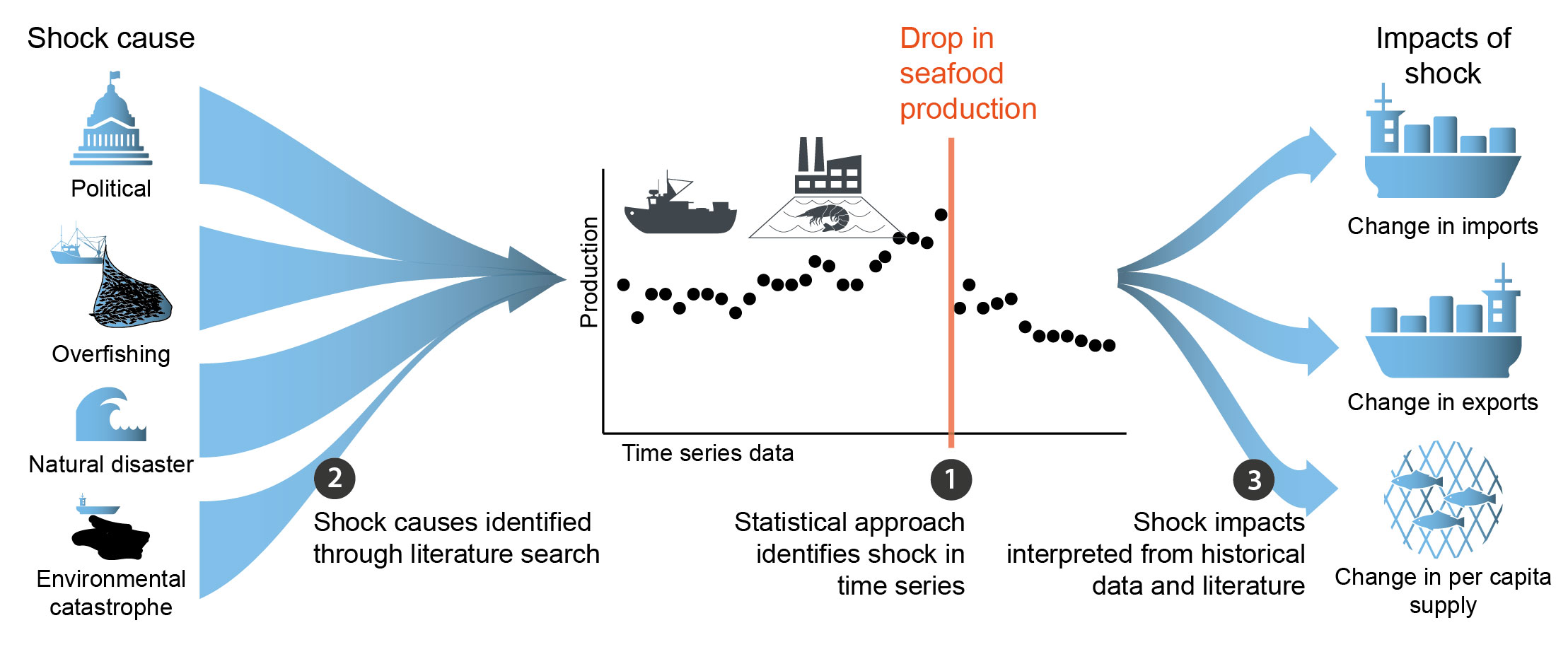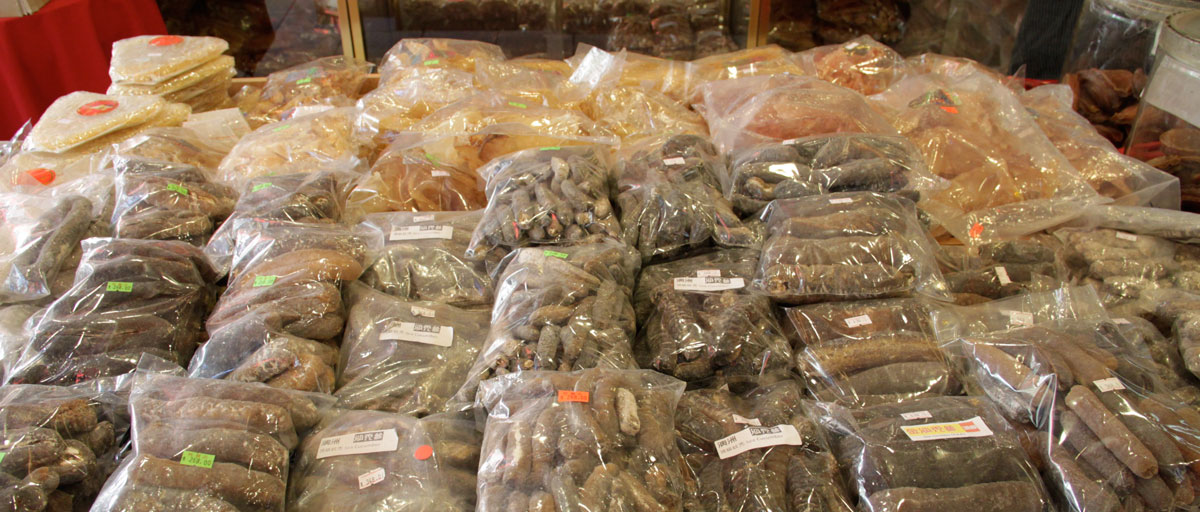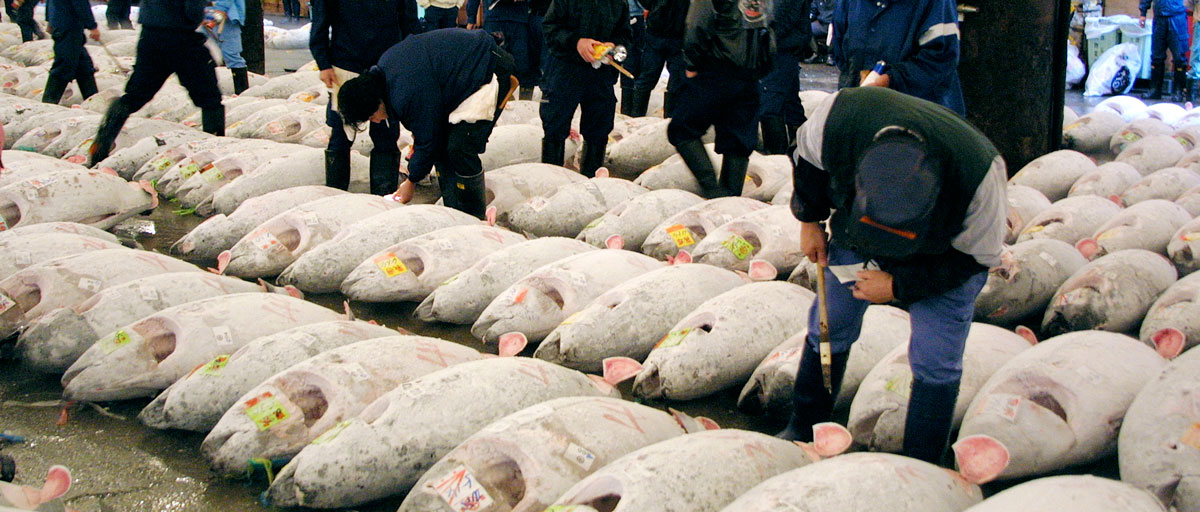
In a recently published paper researchers apply a data-driven approach to understand how various shocks affected the global seafood production from both capture fisheries and aquaculture between 1976 and 2011. Photo: J. Jung/Flickr C.C 3.0
Bildtext får vara max två rader text. Hela texten ska högerjusteras om den bara ska innehålla fotobyline! Photo: B. Christensen/Azote
FISHERIES AND UNCERTAINTY
Shocks to the stocks
New study looks at how shocks like political change, natural disasters, diseases and overfishing have affected capture fisheries and aquaculture worldwide
- In past decades, there have been numerous shocks to food systems, such as the 1990’s collapse of the Newfoundland cod fishery, and the grain crisis in 2008, to name a few.
- Many cases have been studied in detail, but few analyses have taken a more generalized, data-driven approach to understanding why shocks on the food system have occurred
- Deutsch, Troell and colleagues look at seafood production in 127 countries between 1976-2011, using FAO statistics
Shocks are not shocking anymore; be it political, economic, ecological, or social. We live in turbulent times, where shocks are commonplace, and navigating them has become necessary.
Shocks to the global food system are no exception. In past decades, there have been numerous shocks to food systems, such as the 1990’s collapse of the Newfoundland cod fishery, and the grain crisis in 2008, to name a few.
Looking back on these events has value in both understanding and learning about what to do in the event of a shock. As Lisa Deutsch, centre researcher, explains, “Historical examples of shocks can inform policy considerations for responding to shocks and learning from these examples helps identify potential risks and opportunities to building resilience in the global food system.”
While many cases have been studied in detail, few analyses have taken a more generalized, data-driven approach to detect and understand why shocks on the food system have occurred. Even fewer quantitative studies have attempted to understand shocks to fisheries production around the world.
Deutsch, along with centre researcher Max Troell and other colleagues explore just that. In a recent paper published in Global Environmental Change, the researchers apply a data-driven approach to understanding global fisheries and shocks they endured between 1976-2011.
In general, the distributions of magnitudes and recovery times are asymmetric, such that most shocks are small and most recoveries are quick, but when they are not the largest shocks are much larger or longer than the medians
Jessica Gephart, lead author
Differences across the globe
To examine shocks that occurred in global fisheries, Deutsch, Troell and colleagues look at seafood production in 127 countries between 1976-2011, using FAO statistics. They characterize seafood production in two different systems, aquaculture and capture fisheries, and look at different types of shocks such as political, natural disaster, diseases, overfishing, etc.
In the 35-year time period, the analysis yields a total 48 seafood production shocks worldwide. While there are no differences in the number of shocks per region, the study finds that the rate of shocks to seafood production systems was highest in the Caribbean and Central America, followed by Africa, Asia, and Europe, respectively. In other words, Caribbean and Central America experience shocks more often than the other regions.
While the Caribbean, Central America, and Africa experience the most shocks, they also tend to recover the fastest, whereas a seafood production shock in Asia or Europe tends to be bigger. Political factors also tend to be the most common trigger for seafood production shocks.
Jessica Gephart, who been leading the work elaborates, “In general, the distributions of magnitudes and recovery times are asymmetric, such that most shocks are small and most recoveries are quick, but when they are not the largest shocks are much larger or longer than the medians.”
When comparing seafood production shocks to capture or aquaculture fisheries, the study finds that they both experience the same magnitude and recovery time when it comes to production shocks, but aquaculture shock rates are higher from 1980 onwards.
“While the cause of this difference is unknown, aquaculture is vulnerable to shocks from disease outbreaks and possibly also from rapid growth over-shooting environmental carrying capacity,” explains Max Troell.
Three coping mechanisms
It is human nature to try and restore balance to life when things go array. This also speaks true for countries dealing with seafood production crises.
The study finds that countries experiencing seafood production shock are likely to take one of three approaches:
1) imports and supply decrease, while exports increase
2) increases in imports, supply, and exports
or 3) imports increase, while exports and supply decrease.
While the first and third options appear counterintuitive, Deutsch explains, “that some component of the seafood industry is unaffected by the shock. The specific impact on trade and supply is context dependent, with trends in the trade balance and the fishery or fisheries being affected playing a large role in how the shock impacts trade and supply.”
For instance, increased exports from Ghana as fish stocks simultaneously plummeted from overfishing can be explained through looking at the species of fish in question. During this crisis period, high value fish continued to be exported, whereas low value fish were imported for consumption.
The study goes into three other cases; the USSR, Sri Lanka, and Saint Pierre Miquelon; and the context surrounding their response to a seafood production shock.

Figure showing how different types of disruptions can result in shocks to seafood production - from both capture fisheries and aquaculture - that then adversely impact peoples' access to fish resources and trade patterns. The starting point to identify such historical cases of shocks utilizes a time series analysis of global production. Ilustration: Azote
Learning from history
While this study looked at how shocks affect seafood production rates, it does not tell us is if production rates are sustainable in a given country or about knock down effects on other food systems or impacts on people. Understanding sustainable fishery production levels help to define sustainable fishing quotas, and in turn avoid stressing the system into a seafood production shock.
Overfishing, political changes, and many other shocks have repeated themselves in history, and there is value in generalizing and learning from past mistakes.
As Gephart concludes, “The capacity of countries and communities to respond and adapt to shocks to seafood production speaks to their resilience. Learning from historical examples of shock causes, impacts, and responses provide opportunities to build resilience.”
Methodology
Deutsch, Troell, and colleagues use statistical shock detection on historic fisheries and aquaculture data to identify shocks between 1976-2011. They use FAO FishStat statistics for all countries worldwide is used to determine the production of each country, and the shock that each country’s fish production endured. These findings are analyzed as time series patterns, where qualitative data; from news, reports, and literature; complements quantitative findings.
Gephart, J., Deutsch, L., Pace, M. L., Troell, M., Seekell, D. A. 2017. Shocks to fish production: Identification, trends, and consequences. Global Environmental Change 42: 24-32.
Lisa Deutsch is a senior lecturer and also director of studies at the centre. Her research examines couplings between the ecological effects of globalization of food production systems and national policy and economic accounts
Max Troell is a researcher both at the Beijer Institute and the Stockholm Resilience Centre. He is a system ecologist mainly working with environmental problems associated with aquaculture. This work focuses on inter-linkages between aquaculture and fisheries, on different spatial scales.









